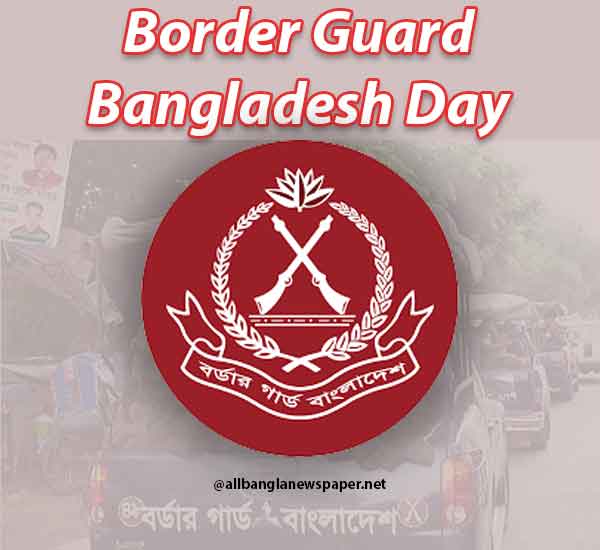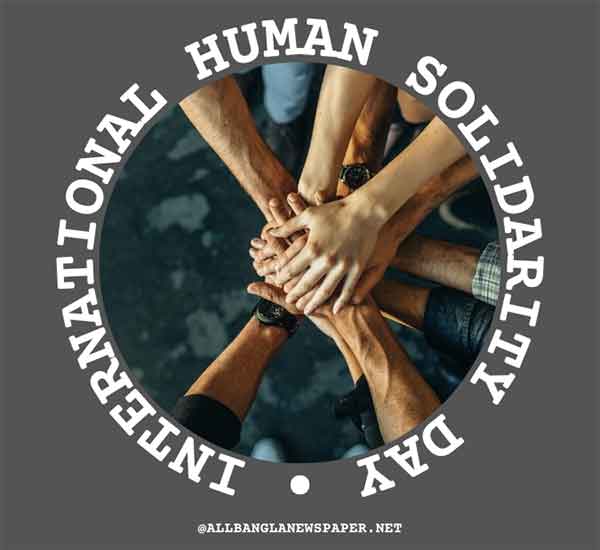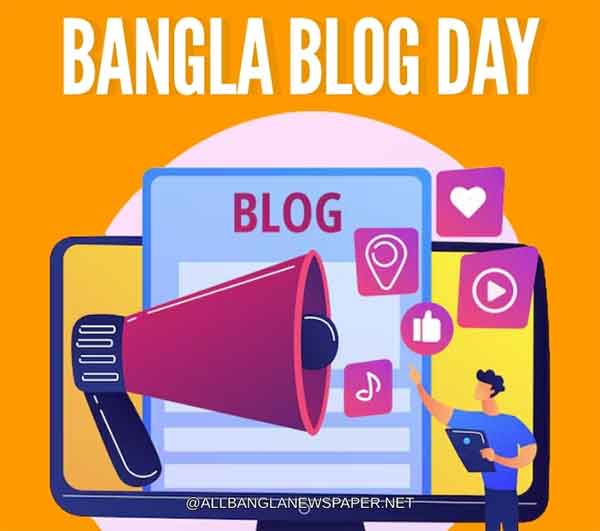
Introduction to International Day for the Eradication of Poverty
The International Day for the Eradication of Poverty, observed annually on October 17, serves as a powerful reminder of the need to address poverty worldwide. Established by the United Nations, this day calls attention to the millions of people living in poverty, while promoting global efforts to combat economic hardship, inequality, and social exclusion. It is a day of reflection and action, highlighting the importance of sustainable development and the collective responsibility to ensure that no one is left behind.
History and Background of the Day
The International Day for the Eradication of Poverty was officially recognized by the United Nations in 1992, following a resolution that aimed to focus global attention on extreme poverty and the need for coordinated global action.
The Role of the United Nations in Establishing the Day
The roots of the day go back to October 17, 1987, when over 100,000 people gathered at the Trocadéro in Paris, the site where the Universal Declaration of Human Rights was signed in 1948. The gathering honored victims of extreme poverty, violence, and hunger. This event inspired the establishment of a dedicated day to address poverty, which was later adopted by the United Nations to reinforce global efforts to reduce poverty.
Why October 17 is Celebrated
October 17 was chosen to recognize the historic gathering in Paris and to honor the ongoing struggles of those living in poverty. It is a day dedicated to giving a voice to the impoverished and raising awareness about the socioeconomic conditions that perpetuate poverty around the world.
The Global Poverty Crisis
Poverty remains a widespread challenge, affecting millions of people across the globe. Despite progress in some areas, poverty is a persistent issue that impacts access to basic human rights like education, healthcare, and housing.
Statistics on Global Poverty
According to the World Bank, nearly 9.2% of the global population, or about 689 million people, live on less than $2.15 per day—the international poverty line. These individuals face severe deprivation, struggling to meet their most basic needs for survival.
Key Causes of Poverty
Poverty is a complex issue driven by several factors, including:
• Unemployment and Underemployment
• Lack of Access to Quality Education
• Economic Inequality
• Political Instability
• Environmental Degradation
• Systemic Discrimination
These root causes often interact, trapping people in a cycle of poverty that is difficult to break without targeted intervention and support.
The Importance of International Day for the Eradication of Poverty
This day is crucial for raising awareness about the devastating impact of poverty and mobilizing people and organizations to take action.
Raising Awareness About Poverty
Poverty often remains invisible in certain parts of the world, particularly in affluent societies. #InternationalDayForTheEradicationOfPoverty shines a spotlight on the struggles of those living in extreme hardship and emphasizes the need for systemic change.
Encouraging Global Action
The day also serves as a rallying call for governments, organizations, and individuals to take concrete steps toward reducing poverty, whether through policy reform, financial aid, or grassroots activism.
Poverty and the United Nations’ Sustainable Development Goals (SDGs)
The United Nations has placed the fight against poverty at the forefront of its Sustainable Development Goals (SDGs), which serve as a blueprint for achieving a better and more sustainable future for all.
Goal 1: No Poverty
The first SDG is to "End poverty in all its forms everywhere." This ambitious goal aims to eradicate extreme poverty by 2030 by promoting inclusive economic growth, social protection systems, and equal access to resources.
How the SDGs Address Poverty
Many of the other SDGs, such as those focused on education, gender equality, clean water, and decent work, also contribute to poverty eradication. The interconnectedness of these goals highlights the multifaceted nature of poverty and the need for comprehensive solutions.
2024 Theme for International Day for the Eradication of Poverty
Each year, the United Nations selects a theme that reflects a critical aspect of poverty. Although the 2024 theme has not yet been announced, previous themes have focused on areas such as dignity, social inclusion, and the importance of empowering marginalized communities.
Focus on Social Inclusion and Human Dignity
The 2024 theme is expected to continue emphasizing social inclusion and human dignity, advocating for policies and actions that ensure everyone, regardless of their economic status, can participate fully in society and live with dignity.
The Impact of Poverty on Society
The effects of poverty extend beyond individual hardship, impacting broader society in numerous ways.
Economic Consequences of Poverty
Poverty weakens national economies by limiting consumer spending, reducing the availability of skilled labor, and increasing government expenditure on social welfare programs. It can also hinder economic growth by preventing large segments of the population from contributing productively to the economy.
Social and Psychological Effects
Poverty often leads to social exclusion, where individuals and families are cut off from opportunities and services. The constant stress of living in poverty can also lead to mental health issues, including anxiety and depression, further entrenching people in the poverty cycle.
Poverty and Inequality
Poverty and inequality are deeply interconnected, with inequality often perpetuating poverty by limiting access to resources, opportunities, and rights.
The Link Between Poverty and Inequality
Economic inequality exacerbates poverty by concentrating wealth and opportunities in the hands of a few while leaving others without access to education, healthcare, and decent work. Tackling inequality is essential to reducing poverty on a global scale.
Addressing Systemic Barriers
To eradicate poverty, it is crucial to dismantle systemic barriers that disproportionately affect marginalized groups, including women, children, minorities, and people living in rural areas.
Government Policies to Eradicate Poverty
Governments play a pivotal role in poverty reduction through the creation and implementation of policies that promote economic stability and social welfare.
Social Protection Programs
Social protection programs, such as unemployment benefits, universal healthcare, and food security initiatives, help cushion the effects of poverty and prevent vulnerable populations from falling further into economic hardship.
Access to Education and Healthcare
Investment in education and healthcare is vital for breaking the cycle of poverty. Governments that prioritize access to quality education and affordable healthcare give individuals the tools to improve their economic situations and reduce poverty in the long term.
The Role of Non-Governmental Organizations (NGOs) in Poverty Eradication
NGOs are critical in the global fight against poverty, often stepping in where governments cannot or will not act.
NGOs’ Contribution to Poverty Alleviation
Many NGOs work at the grassroots level to provide food, healthcare, education, and job training to impoverished communities. Organizations like Oxfam, CARE, and the World Food Programme have implemented successful initiatives worldwide.
Examples of Successful NGO Initiatives
Projects like microfinance programs, which provide small loans to entrepreneurs in developing countries, and education initiatives that focus on keeping children in school, have proven effective in reducing poverty and promoting self-sufficiency.
How Climate Change and Environmental Degradation Impact Poverty
Climate change is increasingly recognized as a major driver of poverty, especially in vulnerable regions.
Climate Change as a Poverty Multiplier
Extreme weather events, such as floods, droughts, and hurricanes, disproportionately affect impoverished communities, destroying homes, crops, and livelihoods. As climate change intensifies, these populations are often the least equipped to recover.
Promoting Climate-Resilient Economies
To combat this, it is essential to promote climate-resilient economies by investing in sustainable agriculture, renewable energy, and disaster preparedness programs.
Economic Growth and Job Creation
Economic growth and job creation are central to reducing poverty, as they provide individuals with the opportunity to improve their living standards.
Creating Sustainable Jobs
Governments and businesses must focus on creating sustainable, well-paying jobs that can lift people out of poverty. This includes investing in industries that promote environmental sustainability and technological innovation.
The Role of Entrepreneurship in Reducing Poverty
Entrepreneurship offers a pathway out of poverty, particularly in developing countries. By supporting small businesses and providing access to financial resources, governments, and NGOs can empower individuals to create economic opportunities for themselves and their communities.
Empowering Marginalized Communities
To truly eradicate poverty, it is essential to focus on empowering the most marginalized and vulnerable groups.
Supporting Women and Children
Women and children are disproportionately affected by poverty. Providing women with equal access to education, healthcare, and employment can have a transformative impact on poverty levels, as women are often the primary caregivers and economic contributors to their families.
Indigenous Communities and Rural Poverty
Indigenous communities and rural populations are often left behind in poverty reduction efforts. Tailored programs that address the unique challenges faced by these groups are essential for ensuring that no one is left behind.
International Collaboration to Combat Poverty
Global poverty cannot be eradicated without international cooperation and solidarity.
The Role of International Organizations
Organizations like the United Nations, World Bank, and International Monetary Fund (IMF) play a crucial role in poverty reduction through financial aid, policy guidance, and development programs.
Global Partnerships and Aid
Partnerships between developed and developing countries, as well as international aid programs, are essential for providing the resources needed to combat poverty on a global scale.
How Individuals Can Contribute to Poverty Eradication
Individuals can also play an important role in the fight against poverty.
Support Charities and NGOs
Donating to and supporting organizations that focus on poverty alleviation is one of the most direct ways individuals can contribute.
Advocacy and Raising Awareness
Raising awareness about the causes and effects of poverty through social media, community events, or personal advocacy can help push governments and organizations to take meaningful action.
Conclusion
The International Day for the Eradication of Poverty is a vital opportunity to reflect on the global poverty crisis and renew our commitment to building a world where everyone has access to basic needs and opportunities. By raising awareness, promoting sustainable development, and fostering global cooperation, we can take steps toward a future free from poverty.
FAQs
What is the purpose of the International Day for the Eradication of Poverty?
The day aims to raise awareness about #GlobalPoverty and encourage action to address its root causes and consequences.
When is the International Day for the Eradication of Poverty celebrated?
It is observed annually on October 17.
How does poverty impact society?
Poverty leads to economic instability, social exclusion, and poor health outcomes, affecting not just individuals but society as a whole.
What is the link between poverty and climate change?
Climate change disproportionately affects impoverished communities, increasing their vulnerability to natural disasters and reducing their ability to recover.
How can individuals help eradicate poverty?
Individuals can support #PovertyEradication efforts by donating to charities, raising awareness, and advocating for policies that address the root causes of poverty.
International Day for the Eradication of Poverty, Poverty Eradication,





